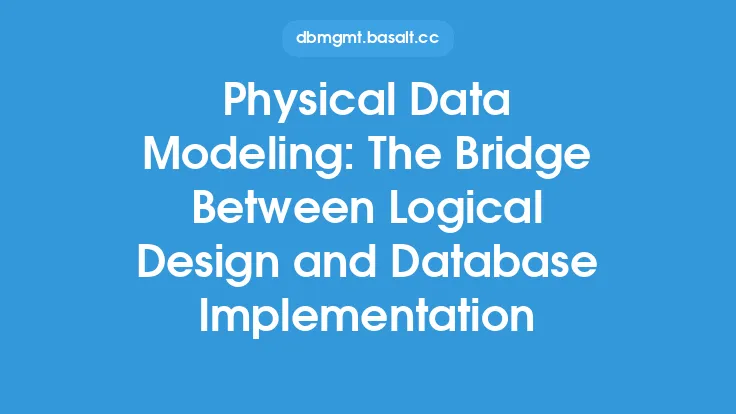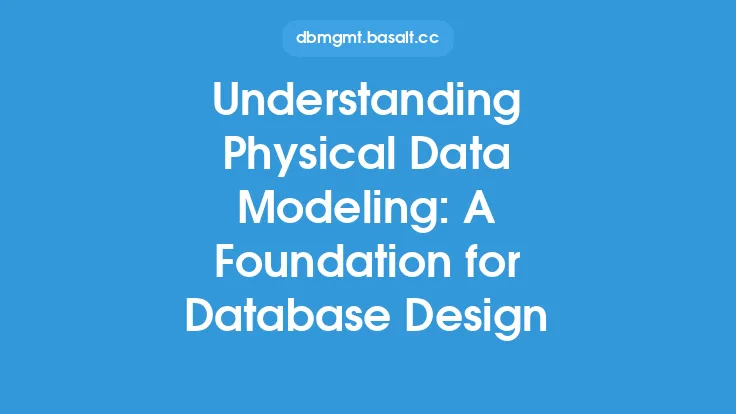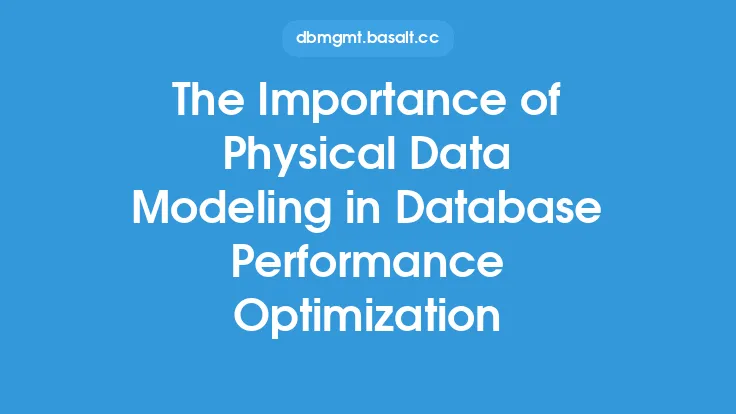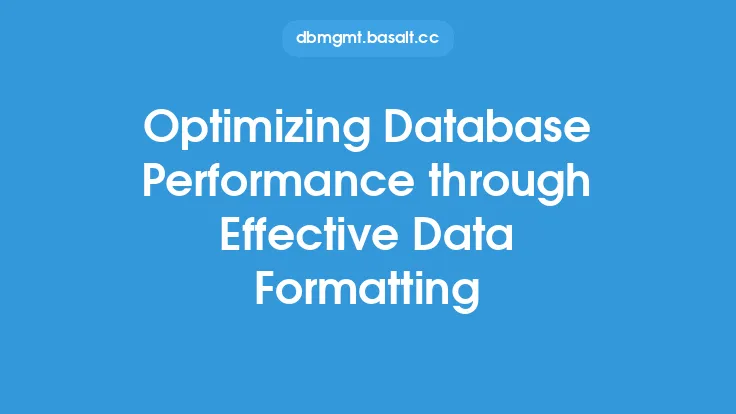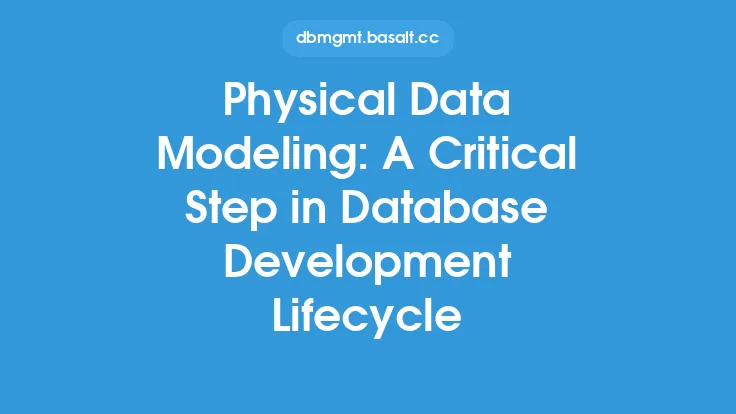When it comes to designing and implementing databases, one crucial aspect that can significantly impact performance, scalability, and overall efficiency is physical data modeling. This process involves creating a detailed, technical representation of the database's physical structure, including the relationships between different data entities, data types, and storage requirements. By optimizing database storage and retrieval through physical data modeling, organizations can ensure that their databases are capable of handling large volumes of data, supporting complex queries, and providing fast data access.
Introduction to Physical Data Modeling
Physical data modeling is a critical step in the database development lifecycle, as it provides a bridge between the logical design of the database and its physical implementation. During this phase, database designers and administrators work together to define the physical structure of the database, including the layout of data on disk, the organization of data into tables, indexes, and other data structures, and the allocation of storage resources. The goal of physical data modeling is to create a database design that is optimized for performance, scalability, and data integrity, while also meeting the requirements of the application or system that will be using the database.
Key Components of Physical Data Modeling
There are several key components of physical data modeling that database designers and administrators need to consider when creating a physical data model. These include:
- Data types: Defining the data types for each column in the database, including the length, precision, and scale of numeric data, as well as the format of date and time data.
- Data storage: Determining the storage requirements for each table and index in the database, including the amount of disk space needed, the type of storage device to use, and the level of redundancy required.
- Indexing: Creating indexes on columns that will be used frequently in queries, to improve query performance and reduce the amount of time it takes to retrieve data.
- Partitioning: Dividing large tables into smaller, more manageable pieces, to improve query performance and reduce the amount of time it takes to retrieve data.
- Data compression: Compressing data to reduce the amount of storage space needed, and to improve data transfer times.
Benefits of Physical Data Modeling
Physical data modeling offers several benefits, including:
- Improved performance: By optimizing the physical structure of the database, organizations can improve query performance, reduce the time it takes to retrieve data, and increase overall system throughput.
- Increased scalability: A well-designed physical data model can support large volumes of data, and handle increasing traffic and user activity, without compromising performance.
- Enhanced data integrity: Physical data modeling helps ensure that data is consistent, accurate, and reliable, by defining the relationships between different data entities, and enforcing data validation rules.
- Better data management: Physical data modeling provides a framework for managing data, including data backup and recovery, data archiving, and data purging.
Best Practices for Physical Data Modeling
To get the most out of physical data modeling, database designers and administrators should follow best practices, including:
- Use a structured approach: Use a structured approach to physical data modeling, including defining the scope of the project, gathering requirements, and creating a detailed design document.
- Involve stakeholders: Involve stakeholders from the application or system that will be using the database, to ensure that the physical data model meets their requirements.
- Use data modeling tools: Use data modeling tools, such as entity-relationship diagrams, to create a visual representation of the physical data model.
- Test and refine: Test the physical data model, and refine it as needed, to ensure that it meets performance, scalability, and data integrity requirements.
Common Challenges in Physical Data Modeling
Despite its importance, physical data modeling can be challenging, especially for large, complex databases. Some common challenges include:
- Data complexity: Dealing with complex data relationships, and large volumes of data, can make it difficult to create an effective physical data model.
- Performance requirements: Meeting performance requirements, such as fast query times, and high throughput, can be challenging, especially for databases that support high-traffic applications.
- Data integrity: Ensuring data integrity, including data consistency, accuracy, and reliability, can be challenging, especially for databases that support multiple applications, or have complex data relationships.
- Storage constraints: Dealing with storage constraints, such as limited disk space, or high storage costs, can make it difficult to create an effective physical data model.
Tools and Techniques for Physical Data Modeling
There are several tools and techniques that database designers and administrators can use to create and implement physical data models, including:
- Entity-relationship diagrams: Using entity-relationship diagrams to create a visual representation of the physical data model.
- Data modeling software: Using data modeling software, such as ERwin, or PowerDesigner, to create, and manage physical data models.
- Database management systems: Using database management systems, such as Oracle, or SQL Server, to implement, and manage physical data models.
- Query optimization tools: Using query optimization tools, such as query analyzers, or index tuning wizards, to optimize query performance, and improve overall system throughput.
Conclusion
Physical data modeling is a critical step in the database development lifecycle, as it provides a bridge between the logical design of the database, and its physical implementation. By optimizing database storage, and retrieval through physical data modeling, organizations can ensure that their databases are capable of handling large volumes of data, supporting complex queries, and providing fast data access. By following best practices, using the right tools, and techniques, and involving stakeholders, database designers, and administrators can create effective physical data models that meet performance, scalability, and data integrity requirements.

